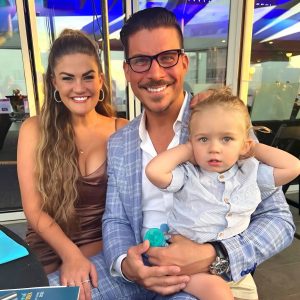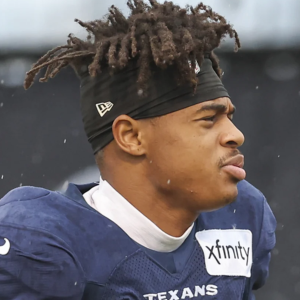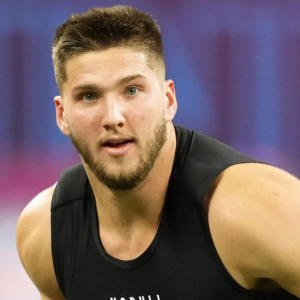It’s one of those ‘good news, bad news’ times.
The good news is that we’re only about a month away from the opening up of Training Camp 2024.
The bad news is that we’re still about a month away from the opening up of Training Camp 2024.
Summer is the season of speculation in the hockey-writing world, and while there’s an awful lot to speculate about when it comes to the upcoming 2024/25 Vancouver Canucks season, there’s also enough uncertainty to make that speculation a difficult undertaking.
Of particular ambiguity right now is the forward corps, which has seen a handful of departures and at least four key additions over the course of the summer. Jake DeBrusk, Danton Heinen, Kiefer Sherwood, and Daniel Sprong are IN, and they join a group of Canucks forwards that are talented, but largely unorganized.
Despite their success in 2023/24, the Canucks will go into this season with essentially zero pre-established forward lines.
Now, there are some solid units from last year that may just stick together. The line of Dakota Joshua, Teddy Blueger, and Conor Garland had remarkable chemistry at times. And the trio of Pius Suter, JT Miller, and Brock Boeser really got it done in the postseason.
But neither of those lines is what anyone might call ‘stacked,’ as in loaded up with as much talent as possible. Each of these units has a clear-cut weak link.
Why does it matter? It might not. But, at times, the Canucks clearly struggled to produce offence, and it’s reasonable to expect that they will at times in 2024/25 – especially if the regressionites have their day. Sometimes, teams need to stack up their top lines in order to break through scoring slumps.
Sometimes, hockey teams do need to – at least temporarily – put all their eggs in one basket.
So, what would a stacked top-six look like for next year’s Canucks?
Not too long ago, stacking in Vancouver referred to putting “The Lotto Line” back together. And despite all the changes that have been made, the most talented trio the Canucks can unite is still that of Elias Pettersson, Miller, and Boeser.
But given that “The Lotto Line” contains the team’s two best centres, it’s far from a balanced set-up, and it doesn’t leave much for the rest of the forward corps. In that scenario, you’ve got Suter sliding in as 2C, and that’s far from ideal.
Of more use over a sustained period may be more of a stacked top-six structure in which one line is built around Pettersson and another around Miller.
Getting better linemates for Pettersson has been a key mission of the Canucks’ front office this summer, and at least one has potentially been obtained in the form of UFA DeBrusk. Chances seem incredibly high that he’ll spend the majority of the season on one of Pettersson’s wings.
The question of who goes on the other side remains open. Nils Höglander might have the inside track after some chemistry was developed last season, but he’d face competition there from some new arrivals in Heinen and Sprong, among others.
None of those options, however, stands out as ideal. And if the idea is to stack lines, that probably entails putting as ‘ideal’ a winger with Pettersson as possible – which might also be the best tactic to ensure the Canucks are getting the most out of their $11.6 million man.
Fortunately, they do have another ideal winger on hand for Pettersson beyond DeBrusk. And it’s Boeser.
Pettersson and Boeser have demonstrated terrific chemistry in the past, and used to be thought of as a veritable duo. It’s only Boeser’s more recently-found chemistry with Miller that has interrupted the on-ice bromance, but it could be sparked again fairly quickly.
A line of DeBrusk-Pettersson-Boeser absolutely qualifies as stacked. But does that leave enough for Miller to work with to staff out a stacked top-six?
It could, if the Canucks just go with what already works. In this case, we’d forget about all those other middle-six candidates – the Höglanders, Heinens, Sprongs, and etcetera – and instead elevate the duo that is most proven to generate offence together.
That’s definitely Garland and Joshua.
Bump Garland and Joshua up to Miller’s wings, and suddenly the Canucks would have on their hands what amounts to a super-charged version of the Blueger line from last year. Both Garland and Joshua are now paid as at least borderline second-line players now. Perhaps it’s time to formally move them up the lineup.
A top-six made up of DeBrusk-Pettersson-Boeser and Joshua-Miller-Garland is about as stacked a set as we can currently come up with. One of the best things about it is that it doesn’t leave the bottom-six in an awful state, either.
Under this scenario, we can imagine either of Suter or Blueger sliding into a 3C role and eating up some softer minutes with some of the more mercurial forwards, like some combination of Höglander, Heinen, and Sprong.
That leaves the other of Suter or Blueger to staff a strong, defensively-and-energy-oriented fourth line with the likes of Sherwood, Vasily Podkolzin, Phil di Giuseppe, and more as potential wingers.
We’re not proposing any of this as a permanent set-up. In the realm of hockey lines, there are rarely any permanent set-ups anyway.
But it does strike us as a set of lines that could be employed frequently in 2024/25, particularly during those times when the offensive well has run a bit dry. With so many key core players locked into place, it’s never a bad idea to play to strengths, and in stacking their top-six, the Canucks do have an opportunity to really wield their offensive weaponry to the best of its ability this season.
Again, when the time calls for it.





